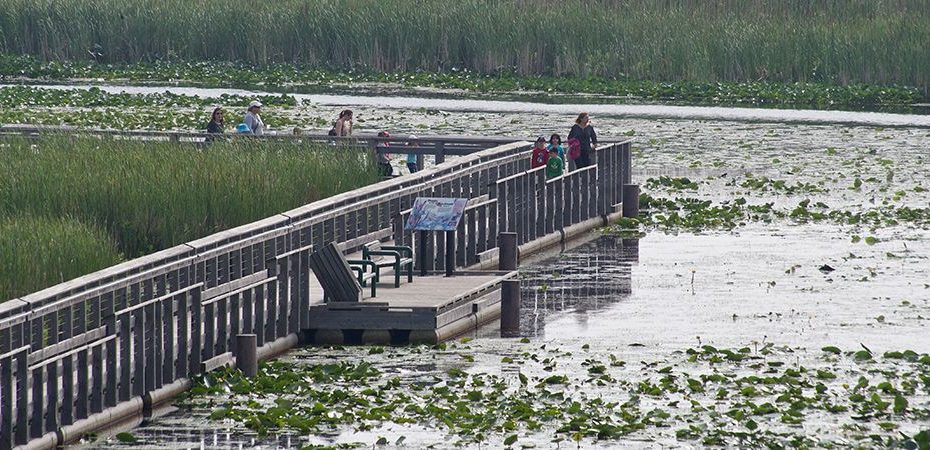The much-awaited State of Ontario’s Biodiversity 2025 report now provides a glimpse into the last five years of progress on the targets and actions of Ontario’s Biodiversity Strategy.
Originally created in 2005, the Biodiversity Strategy was developed by the Ontario Biodiversity Council, which includes Indigenous communities, environmental organizations, government, academia, industry and other partners. It acts as a comprehensive ‘to-do’ list for protecting and restoring biodiversity by 2030. The report, on the other hand, tracks progress on implementation of the strategy’s targets, highlights those requiring attention and analyzes trends.
Based on insights from the report, summarized below, it’s clear that Ontario will need all-hands-on deck to meet the 2030 conservation goals.
Accessible marsh boardwalk, Point Pelee National Park © Robert Roaldi
Progress on Biodiversity Targets
The province’s Biodiversity Strategy contains a series of targets which aim to empower people, reduce threats, enhance resilience, improve knowledge and, as of the 2023 update to the strategy, transform investments. Many of these targets align with Canada’s 2030 Nature Strategy and the international commitments to the 2022 Kunming-Montreal Global Biodiversity Framework, but more alignment and federal cooperation is needed. Targets within the above themes are graded based on progress, including little progress, some progress, substantial progress, achieved and assessment underway.
For instance, Target #6 has made some progress in reducing threats to biodiversity by reducing the release of ecologically damaging pollutants, though challenges with industrial emissions and contamination linger.
Despite many targets underway and some requiring a longer-term approach, efforts must accelerate. Over half (54%) of targets were found to have made little progress, 38% made some progress, no targets made substantial progress and none were fully achieved.
Figure 1: Analysis of 2025 progress on Ontario Biodiversity Strategy targets. Graph adapted from State of Ontario Biodiversity – 2025 Summary (p. 21).
Ontario’s Biodiversity Trends
To assess changes over time, the report also uses 27 indicators to evaluate the health of Ontario’s ecosystems, species and genetics, pressures on biodiversity as well as conservation response. The report then assigns the indicators a trend status: no change, improvement, mixed, deteriorating or baseline.
Among the 27 indicators, 26% were trending improvement, with most being in the category on conservation response. This can be largely attributed to improved societal awareness of the importance of biodiversity.
However, the 2025 report reveals that more indicators (+15%) are deteriorating than previous reports (12% in 2020 and 2015). The greatest number of deteriorating indicators appear as pressures on biodiversity, including higher rates of habitat loss and diminishing ice cover on the Great Lakes.
Similarly, the health of Ontario’s ecosystems, species and genetics had no improved indicators, with most indicators qualified as mixed and others, like Ontario’s wetlands, deteriorating.
Figure 2: 2025 trend assessment for biodiversity indicators. Graph adapted from State of Ontario Biodiversity – 2025 Summary (p. 21).
Despite an increasing awareness about the importance of biodiversity amongst Ontarians, the province has become a laggard in nature conservation nationally. It is clear we need the provincial government to commit to effectively implementing the Ontario Biodiversity Strategy while undertaking the necessary transformative change needed to halt and reverse biodiversity decline.
However, it is important to recognize that the responsibility to protect biodiversity doesn’t just lie with the government; it’s a duty shared amongst us all. Please help us advocate for the protection of biodiversity and endangered species. The recently passed Bill 5 is a disastrous legislation scraps the Endangered Species Act, and creates lawless “special economic zones” for developers to exploit.
Help us repeal it by signing and sharing our Action Alert.
Your browser does not support iframes. Please visit https://ontarionature.good.do/repeal-bill-5/petition/
Resources
The post Ontario’s Biodiversity Report Card: Lessons in 2025 appeared first on Ontario Nature.
